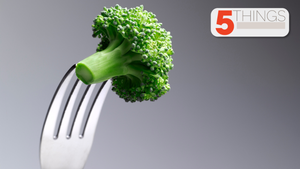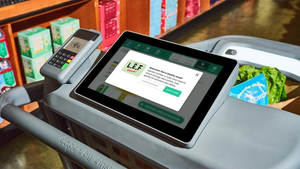The First Family of wine
January 1, 2018
WEB EXCLUSIVE: Draeger’s has been in the wine business for nearly 90 years and remains a top shop for everyone from everyday consumers and oenophiles to collectors. If California is the wine capital of the U.S. then Draeger’s may be its first family. The San Mateo-based retailer, which also has stores in Menlo Park, Los Altos and Danville, has been a fixture in the Bay Area for nearly 90 years, garnering a reputation as a purveyor of high quality gourmet foods, an award winning restaurateur and cooking school operator that has featured scores of expert chefs from around the country. Moreover, the story of Draeger’s markets closely parallels the evolution of California as one of the top wine producers in the world—whose departments feature over 2,500 labels and cater to everyday consumers and oenophiles to serious collectors of rare vintages. The story began in 1903 when Gustav Draeger, a young Prussian immigrant, came to the U.S. and soon moved to San Francisco where he opened his first grocery store in the newly developed Richmond District. “My grandfather started the business in 1925 as a liquor and deli store,” says vice president Tony Draeger, who also oversees the company’s extensive wine departments. “In those days people would bring their empty bottles to the store and refill them from large casks. After prohibition he obtained the first liquor license in San Francisco.”
Forty years later, Draeger’s debuted its first “modern” wine department in 1978 at the Menlo Park store. “This was when a law restricting alcohol sales close to Stanford University was changed. At that time, my father and I stacked wine around the store, and above the low profile freezers. It was a mix of California jug wines, other popular local products and moderately priced French wines like Beaujolais, Macon Blanc and Pouilly-Fuisse,” says Draeger. Two major remodels later, wine became a full department within the store. Eventually departments were built in three newer stores with wine bars featured in two of them, he added. Draeger’s has also attacked the wine business on two fronts—first in the stores and more recently in Viognier, a restaurant that combines classical French cooking with the best of California’s regional cuisine. “The restaurant manages its own wine list and inventory, but can also draw from the store when necessary, and the list they have developed has brought additional prestige to our wine department. It is a good synergy,” he says.
Clearly, the recession had some impact on retail wine sales. “Shoppers have become more price sensitive and there’s been a slowdown in sales of the higher-end wines—what I call ‘level 2’ wines. The highest priced premium wines, such as DRC or Petrus, are still in big demand due to limited supply and ultimate prestige. Once you get above $100 per bottle you are in a different category of wine. ”But shoppers tend to buy less wine above $30 than they used to. The high mid-priced area of $40 to $60 took a hit, but seems to be coming back now,” he says. A difficult economy has given rise to big box stores and discounters who continue to grab market share. “They have low markups and can be great sources of low priced value wines, as well as some good premium items,” Draeger says. “Customers who were shopping in conventional markets like ours were forced into Walmart, Costco and Target which has become a bigger factor in wine retailing.“ Another trend in the wine business is the development of flash retailers on the Internet, sites that blast limited-time wine deals. “These are good for wineries that are trying to clear out old inventory, but it may hurt their image if they are in the premium end of the market,” he says. “All of these new competitors hurt volume at traditional grocery and wine shops. Therefore, we have to make up for it with product knowledge, the acquisition of hard to find and limited supply wines and niche marketing,” says Draeger. “As such, we ‘hand sell’ much of our product, meaning we help customers find the wines that go with their meals, or for the particular occasion they are shopping for. “I think that the general trend toward more knowledge about food sourcing has taken hold with the young and the affluent and interaction between our wine steward and customers is very important to us. Wine is increasingly identified with its geographic origin and I think this has altered the characteristics of demand,” he says
All this also bodes well for California wines. “Everything I read suggests more people are drinking wine than ever before in the U.S. and the market for California wine has grown significantly in both in volume and quality,” says Draeger, noting that demand for premium California varieties is outstripping demand for premium, French, German and Italian wines. “If our volume was 35% imported wines 30 years ago, it is closer to 15% now.” And despite aggressively priced product from places like Argentina, Chile and New Zealand, Draeger’s customers are still focused on premium California wines. “Our stores are in the wine country, with the Santa Cruz Mountains next door, and Napa and Sonoma to our North. Development of the Central Coast is also expanding with premium wines coming from areas like Santa Lucia and even Paso Robles. I am especially impressed with the advances in the quality and consistency of California Pinot Noir over the last 20 years.” While Draeger’s has maintained its unit volume and is at a ‘comfortable” inventory level, educating consumers is still the most important job. “We publish four newsletters a year containing important information about new wines and we have a staff of knowledgeable wine stewards who can interact with customers.
“Our staff also conducts educational seminars in our cooking schools and nearly every class involves wine pairing. Winemakers from Thomas Fogarty and Varner will be at our cooking school this summer to talk about their wines. We also have focused tastings at our wine bar and winemaker dinners at Viognier. Asked how consumer tastes are changing, Draeger replied: “If you look back 30 years we were selling sweet or semi-sweet high alcohol Zinfandels, a Chenin Blanc and German wines. Today wines are drier, with more moderate alcohol levels and what I can only describe as having ‘more finesse’. They are better balanced. And have varietal character without overdoing the fruit and tannin. “Chardonnay and Cabernet Sauvignon remain the most popular varietals, followed by Pinot Noir and Sauvignon Blanc. California Pinot Noir has really taken the market from French Red Burgundy,” he says.
About the Author
You May Also Like




